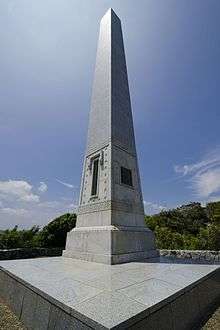Onjuku
Onjuku (御宿) is a fishing town on the Pacific coast of Chiba prefecture, Japan and a popular spot with surfers and holiday beachgoers.
Understand
Nestled in a sweeping bay, Onjuku is one of the best-known small towns on the Pacific coast of the Bōsō peninsula. The regional industry of commercial diving for abalone and lobster started around here, though low yields have caused a downturn recently. Until the 1960s, the abalone diving was done by young women called "ama" who dove with no breathing apparatus, and bare-chested. You can see statue of an ama on the Onjuku station platform.
Get in
By train
Onjuku is on JR's Sotobō Line. Most Wakashio and View Wakashio limited express trains from Tokyo station stop here. These trains, which depart from the underground Keiyo Line platforms, make the run to Onjuku in about 80 minutes (¥3700). All of these trains, which can be taken at no charge with the Japan Rail Pass, also stop at nearby Ohara and Katsuura stations.
Local trains from Tokyo cost only ¥1890 and take about two hours if your train connections are timed right, otherwise you may face a hefty wait and the travel time could be up to three hours.
See

- The Tsuki no Sabaku (月の砂漠, "Desert of the Moon") statue is Onjuku's landmark. Located on the beach, it depicts a prince and princess in Arabian garb on camels, and was erected in 1969 to commemorate a 1923 song inspired by this beach.
- The Mexico Commemorative Tower (メキシコ記念塔) is on the promontory north of the town. It commemorates an event in 1609, when a Spanish ship bound from Mexico to the Philippines was shipwrecked and the crew were rescued by the people of the village. That historical event led to a modern-day friendship with Mexico, and Onjuku is a sister city of Acapulco. Erected in 1928, the obelisk was painted black during World War II to foil American B-29s who used it as a landmark on their way to bomb Tokyo.
Do
Summertime in Onjuku means enjoying the beach and surfing. Young surfers from Tokyo come out year-round, though the waves are quite tame by world standards.
- Flying Sumo Surf Company (Sumo Surf) (5 min walk from Onjuku station, 100 meters before waterpark), ☎ +81 470-60-3011. Surf shop providing surfboard rental, surfboard sales, surfboard storage and surf lessons. English, Japanese and Korean spoken. On-site bar serving large selection of imported beers, large deck to relax in the sun and great pizzas, burgers and hotdogs. 2nd floor has a pension for nightly accommodation and a large fully furnished BBQ deck.
Buy
Eat
There are a number of restaurants and coffee shops on the main street leading out from the train station. If you're feeling rich, pop into a sushi shop and try some spiny lobster (伊勢海老, ise-ebi), sushi or abalone (あわび, awabi).
Drink
Sleep
During the tourism season, there are plenty of small inns and private homes with rooms to let. Many of these offer lodging only (素泊まり, sudomari), with no meals. There is a small tourism office to the left as you exit the train station.
- Hotel New Hawaii, ☎ +81 470-68-2121. , on the beachfront. The first (and possibly only) resort hotel in town, it was built in the early 1970s, when Onjuku was the closest thing to Hawaii most Japanese could experience.
- Flying Sumo Surf Company ((Sumo Surf)), 2140-2 Hama, Onjukumachi, Isumi-Gun, Chiba-Ken (5 min walk from Onjuku station, 100 meters before waterpark), ☎ +81 470-60-3011. Check-in: 14:00, check-out: 10:00. Flying Sumo has 4 studio units and 1 two bedroom unit available for nightly rental. Each of the studios range in size from 20 to 22 Sq mtr while the 2 Bdrm unit is 36 Sq mtr and all units include a full bathroom, flat screen TV, air conditioning, refrigerator and the studios have large lofts. Guests have access to our extensive DVD library free of charge.BBQ available. 5 min walk to the beach from 9,000 yen for 1 to 2 pax.